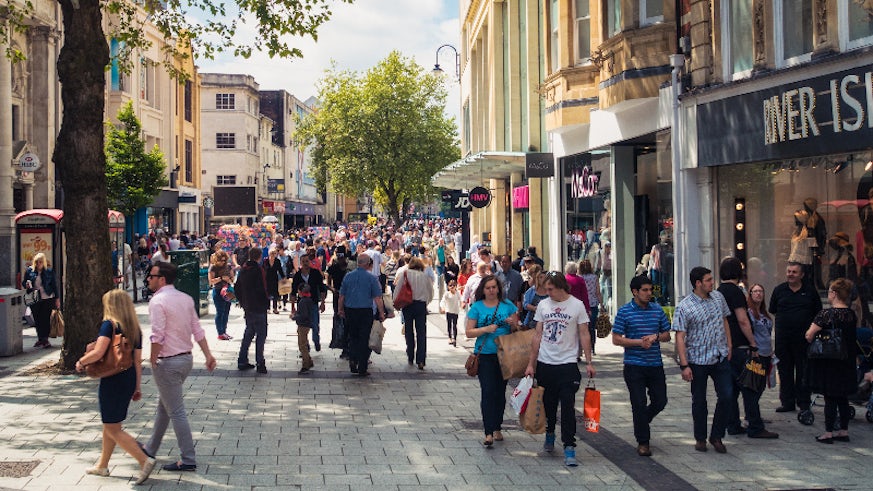Research shows fall in number of empty Welsh shops
26 January 2018

New initiatives are needed to fill vacant shops and keep high streets thriving around Wales, research co-authored by Dr Scott Orford and WISERD academics concludes.
The third annual report from WISERD and the Local Data Company (LDC), reveals the number of empty retail premises on Welsh high streets stood at 13% in 2017. Although this is a small reduction on the previous year (13.2%), the research shows the country still lags behind the rest of the UK. Just 11.1% of shops in England were vacant in 2017 and 11.9% in Scotland.
Towns with the highest number of empty shops include Milford Haven, Abertillery and Tonypandy, where more than one fifth of shops are vacant. The lowest proportion of unoccupied premises can be found in Penarth, Cwmbran and Conwy, where fewer than 5% of shops sit empty.
The analysis was discussed during the Welsh Retail and Leisure summit, which took place on Tuesday January 23 at Cardiff University.
Dr Scott Orford, Reader at the School of Geography and Planning and WISERD Data Research Co-ordinator, said: “There continues to be a clear relationship between local levels of deprivation and retail vacancy rates. In some towns, nearly two-fifths of vacant premises have been empty for more than three years. More investment is needed to bring these premises back into use and to maintain vibrant high streets for the communities that rely so heavily on them.”
The report also highlights the rise of the independent retailer. The number of non-chain establishments has risen from 54% to 58% since 2013. But these figures are still lower than the rest of the UK at 65%.
Pembroke Dock, Milford Haven and Ruthin have seen the largest increases in the proportion of independent shops since 2013. Brecon, Llandrindod Wells and Abergele are the towns which have experienced the largest decline.
Dr Orford added: “In the last couple of years, there has been an increase in independent retailers, with a noticeable rise in the more rural areas of Wales. Such a development is encouraging given the trend of some of the big retailers reducing their shop numbers and this may reflect consumers wanting something different on the high street from what they can find online.”
Chris Fowler, Relationship Manager at The Local Data Company, said: “Welsh towns continue to see a shift away from Comparison Goods Retail shops towards Leisure (food, beverage and entertainment) and Services – reflecting the wider trend seen in England and Scotland as town centres evolve, and experience becomes more important in driving footfall.
“The more isolated locations typically have a lower retail vacancy rate than elsewhere, with more independents and less competition from nearby centres. A decrease in independent occupiers in these areas may be an early warning signal about a potential threat to their vitality as online accessibility improves.
“Businesses in these remote locations should get on the front foot to ensure that they are able to capitalise on any increases in connectivity. It’s now much more cost-effective for occupiers to use the latest technology platforms to their benefit - by highlighting the quality of their service online to drive footfall. This can be even more powerful when co-ordinated as part of a campaign across a street or wider area.”
Share this story
The School applies critical thinking and practical knowledge in solving economic, environmental and social problems to address the grand challenges faced by human societies and places today.

